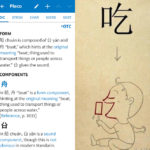Articles in the ‘Vocabulary’ category Page 8
-
What important words are missing from TOCFL?
TOCFL is the standard test of Chinese proficiency in Taiwan. The official lists cover a total of 8000 words spread over 6 levels, but what words are common, yet missing or delayed in these lists? This article strives to answer this question. As a student, you probably want to check the missing and delayed words to plug holes in your Chinese vocabulary!
Read → -
What important words are missing from HSK?
HSK is not only a popular test, it’s also used by many students as a guide for which words to learn. But the HSK lists don’t contain all common words, so it raises the question which words are missing or delayed in the HSK word lists. This article gives one answer to this question, showing that certain categories of words are missing entirely, such as profanity, place names and names for things foreign in China. As a student, you probably want to learn these, so browsing through the list of missing words could be helpful!
Read → -
Are mnemonics too slow for Chinese learners?
Mnemonics are very effective for certain types of learning, but how effective are they for learning Chinese? This article is the first of two that looks at the effectiveness of mnemonics, focusing on the question of speed. Are mnemonics too slow to be really useful in the context of using a foreign language?
Read → -
Learning Chinese words: When quantity beats quality
Any teacher, student or researcher will agree that vocabulary is important, but how should you go about it? What’s the goal? This article argues that a common problem for learners of Chinese is that they spend too much time learning too few words, and that they would be better of aiming for quantity over quality in many cases.
Read → -
When spaced repetition fails, and what to do about it
Spaced repetition software can boost your vocabulary learning significantly. The idea is to schedule each review as late as possible, but not so late that you forget the answer. This sounds good in principle, but when it comes to learning languages, just barely being able to come up with the right word is not enough!
Read → -
Dealing with Chinese characters you keep mixing up
The more Chinese characters you learn, the harder it becomes to keep similar characters distinct. If you’re not careful, a pair or group of characters can generate a lot of extra work and frustration. The solution is to trace your errors and figure out why you get the characters wrong and, then deal with them decisively!
Read → -
5 levels of understanding Chinese characters: Superficial forms to deep structure
How much do you need to care about the actual composition and meaning of a Chinese character when learning it? In general, better understanding means it’s easier to learn, but is there a limit to how closely you should stick to actual etymology? This article explores the spectrum from using superficial images to real etymology from the perspective of a language learner.
Read → -
Does using colour to represent Mandarin tones make them easier to learn?
Some learning materials, apps and tools allow you to add colours to show Mandarin tones, but is this really helpful? This article discusses the ins and outs of using colour to learn and remember tones, along with some practical considerations.
Read → -
How to look up Chinese characters you don’t know
Looking up an unknown character in Chinese is much trickier than looking up unknown words in most other languages. This article discusses various ways of looking up Chinese characters, including paper dictionaries, handwriting input, OCR and more.
Read → -
New course: Unlocking Chinese – The Ultimate Guide for Beginners
Do you want to make sure your Chinese learning gets off to a good start? Or have you already started, but feel a bit confused and need guidance? Then my new course, Unlocking Chinese: The Ultimate Guide for Beginners, is for you!
Read →









